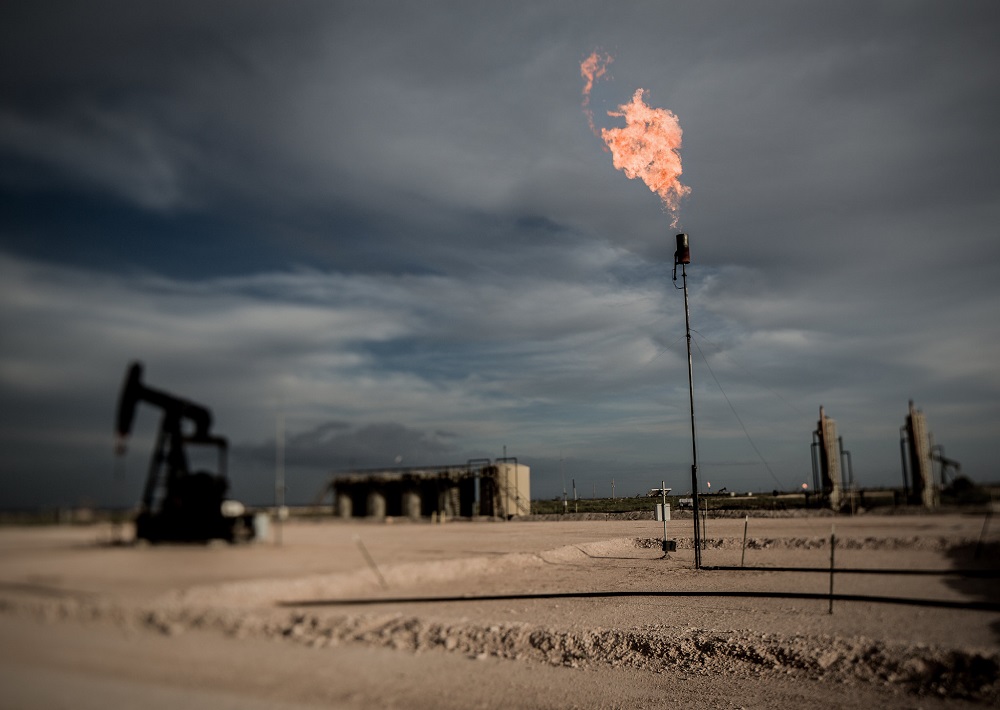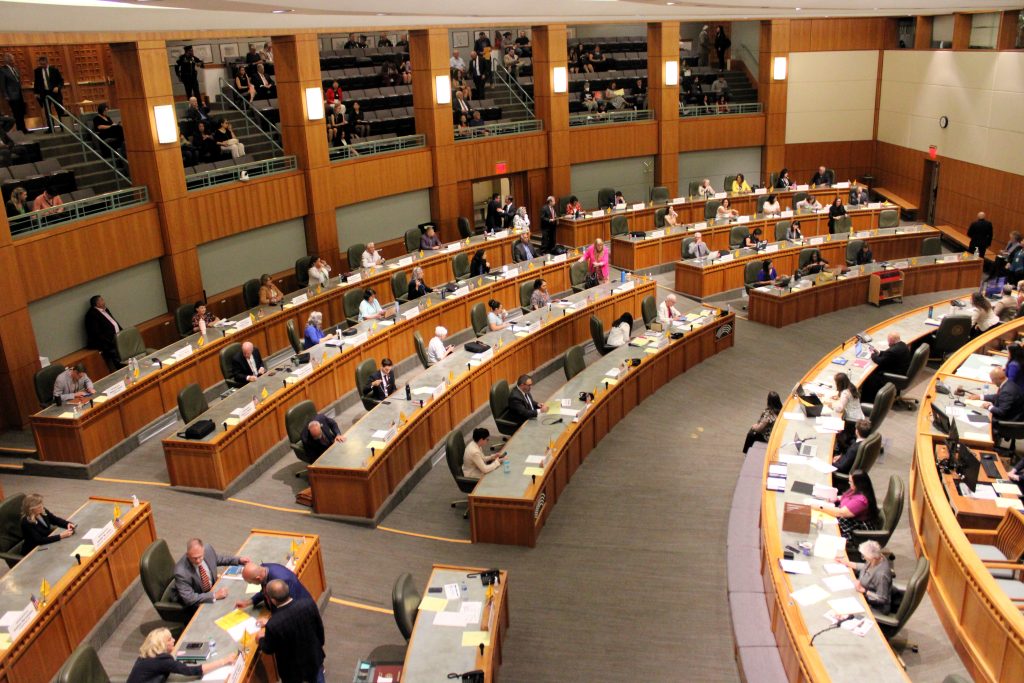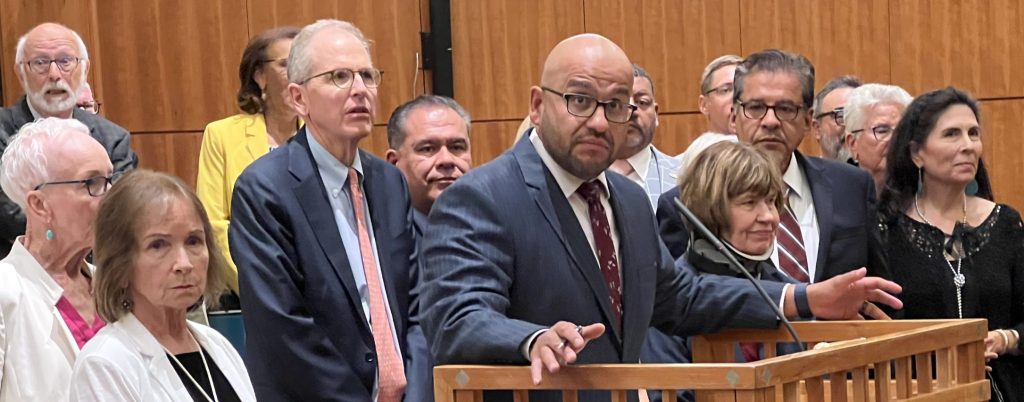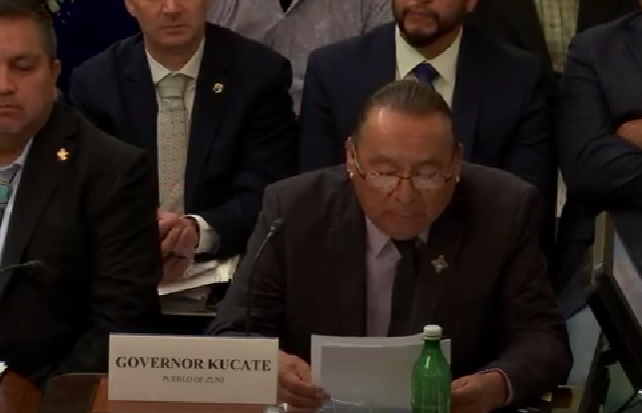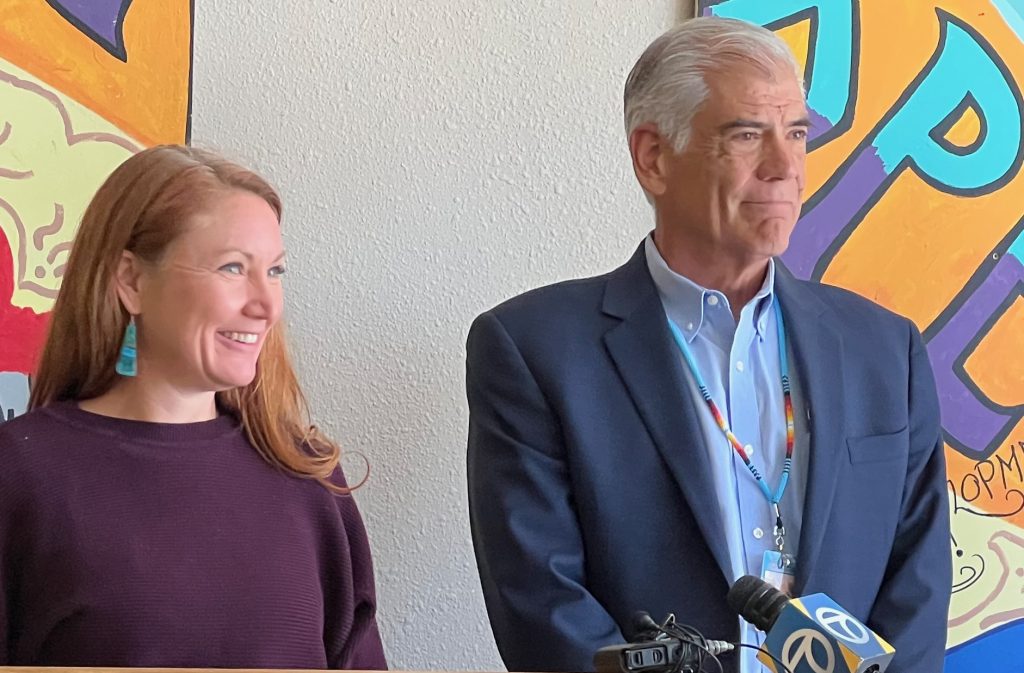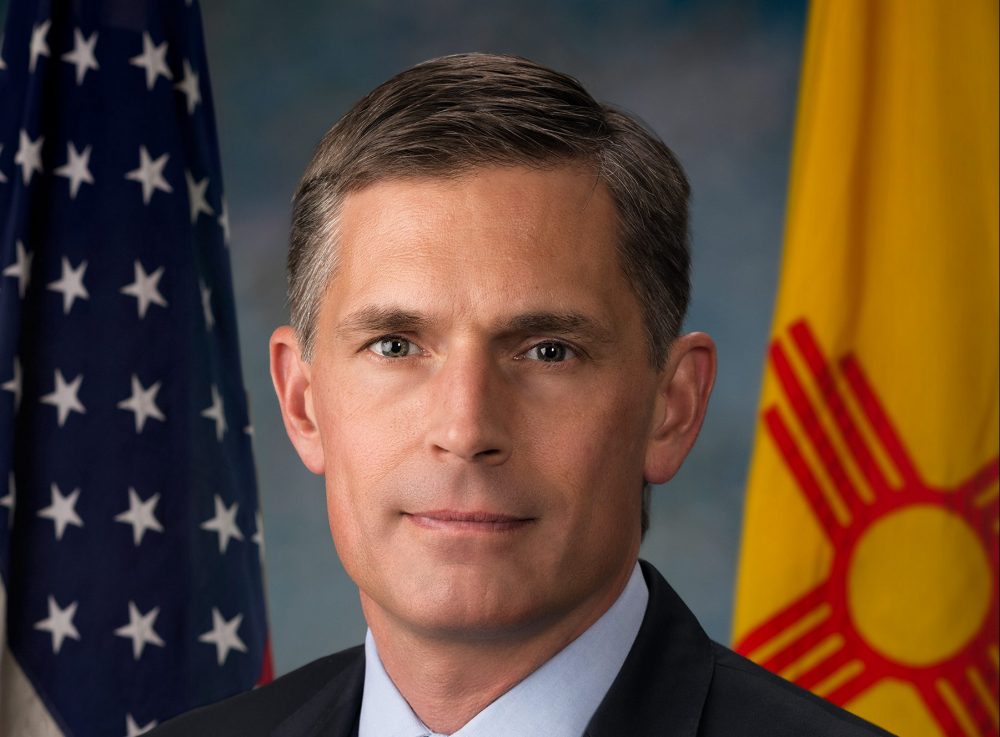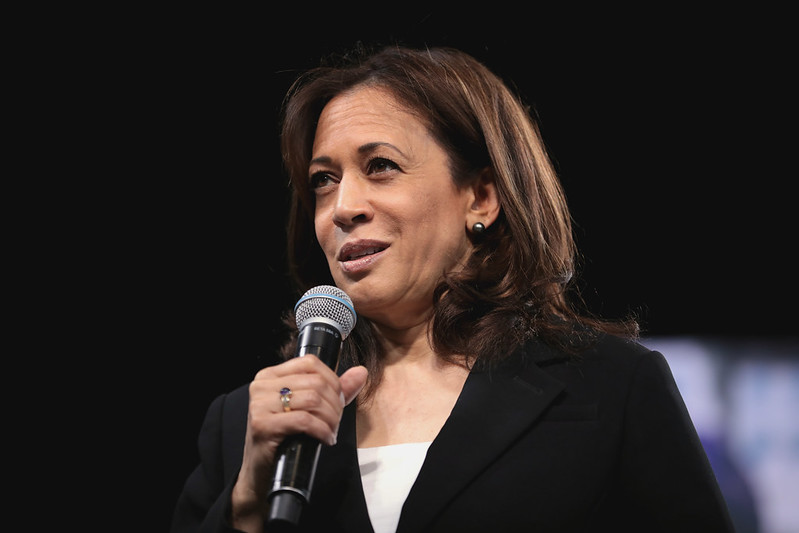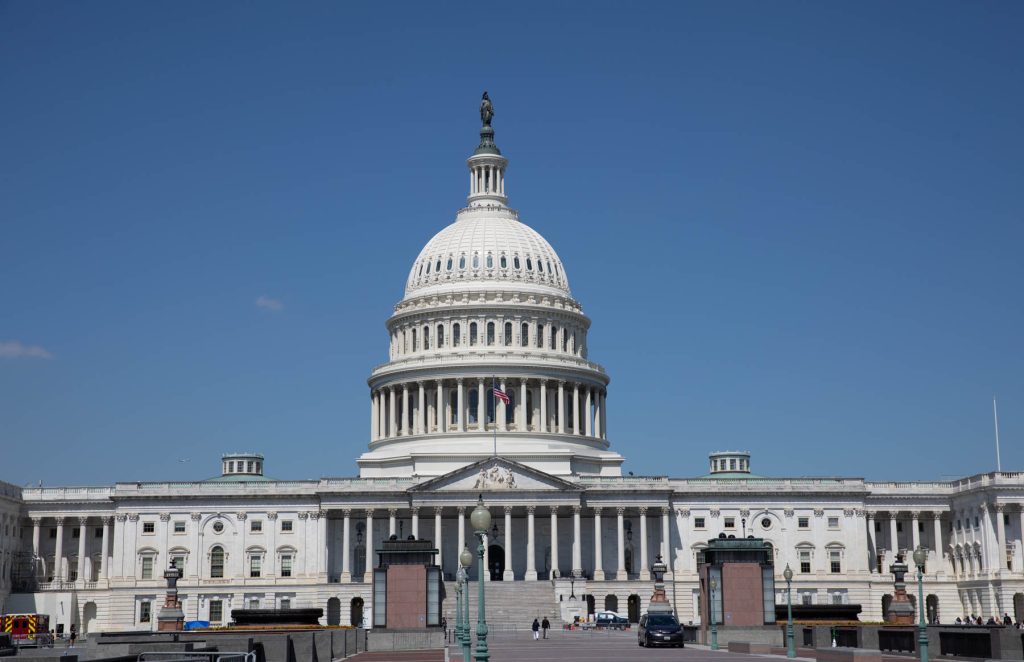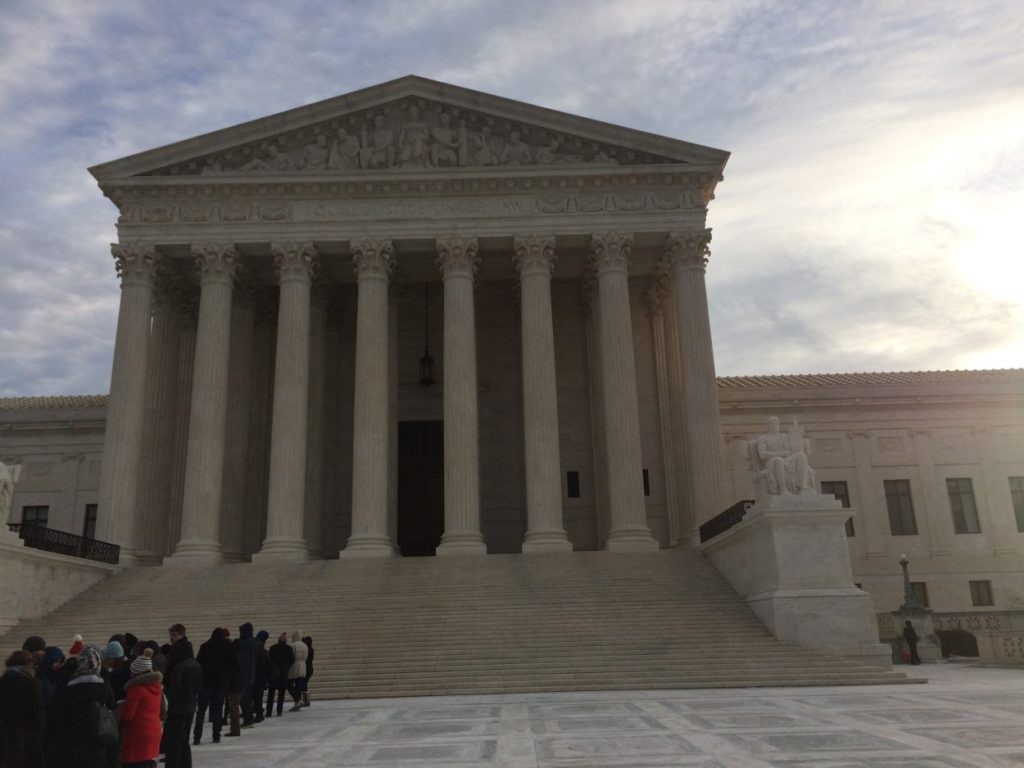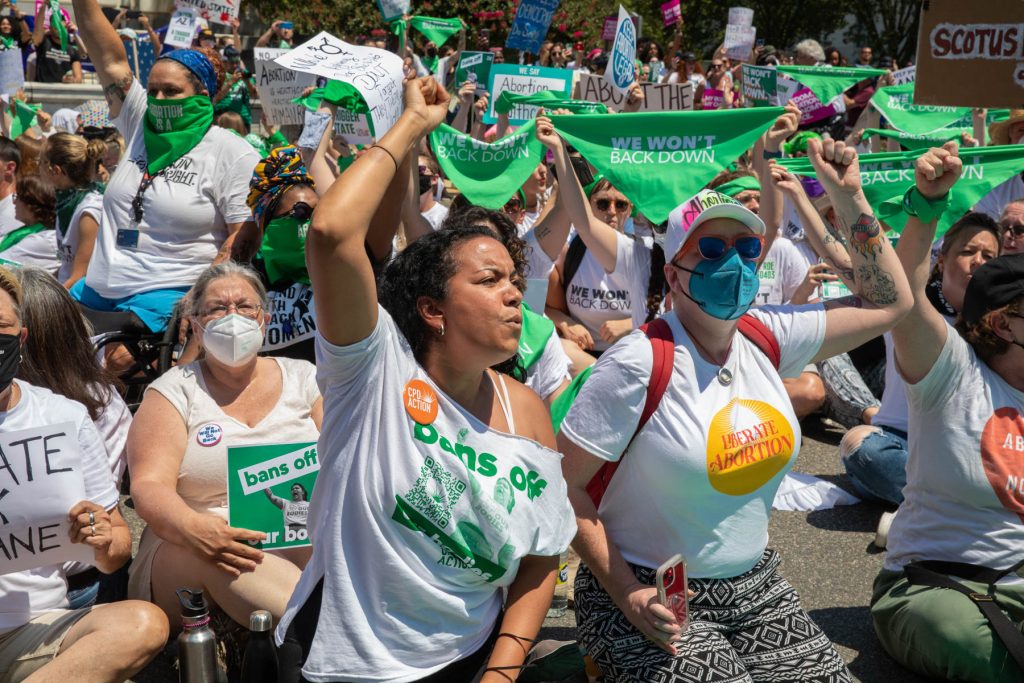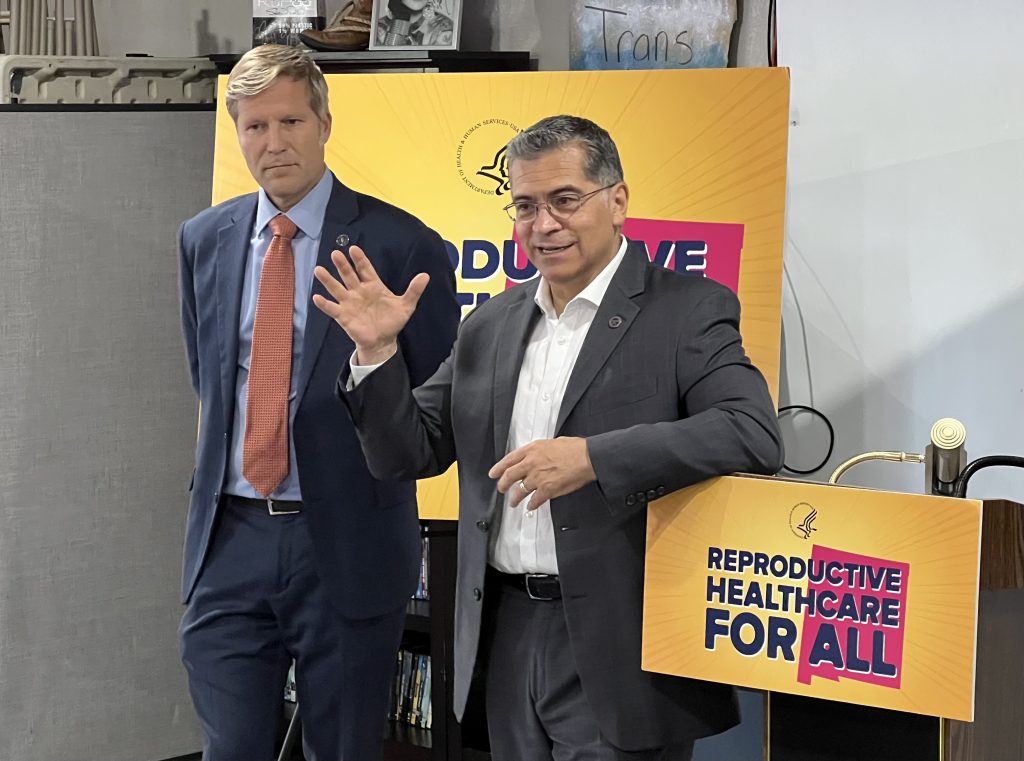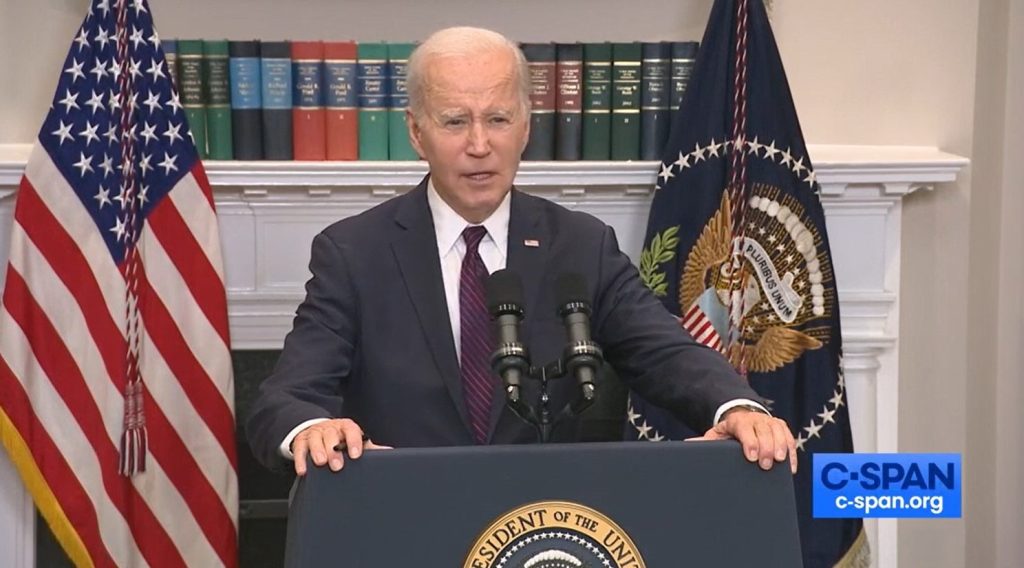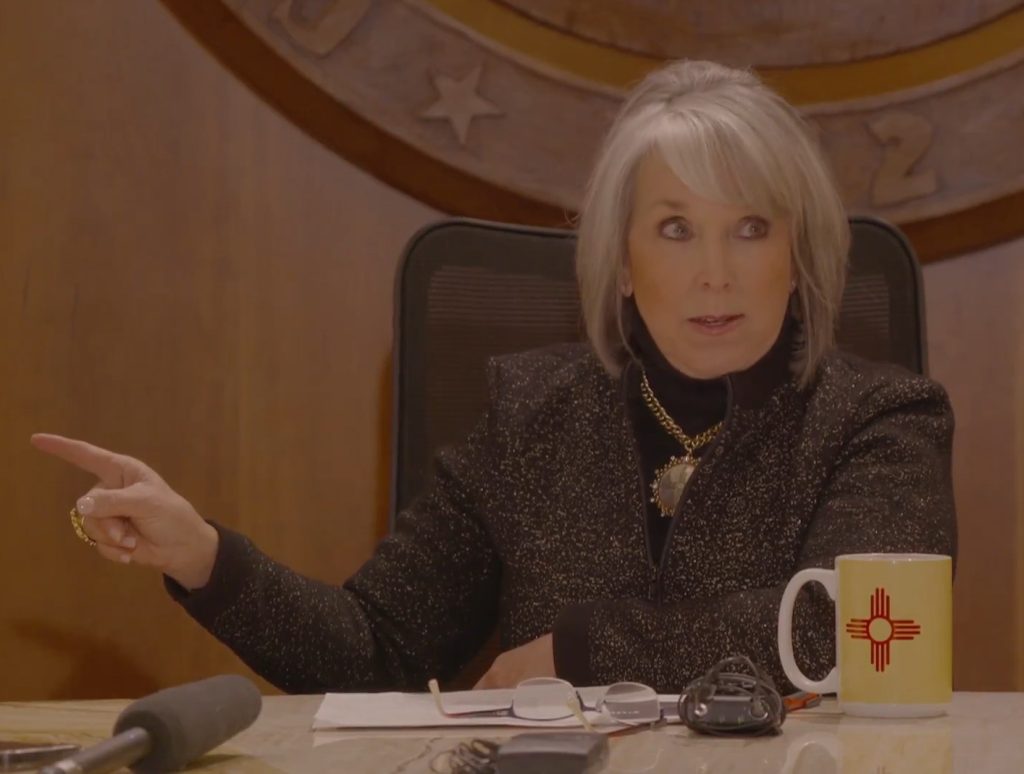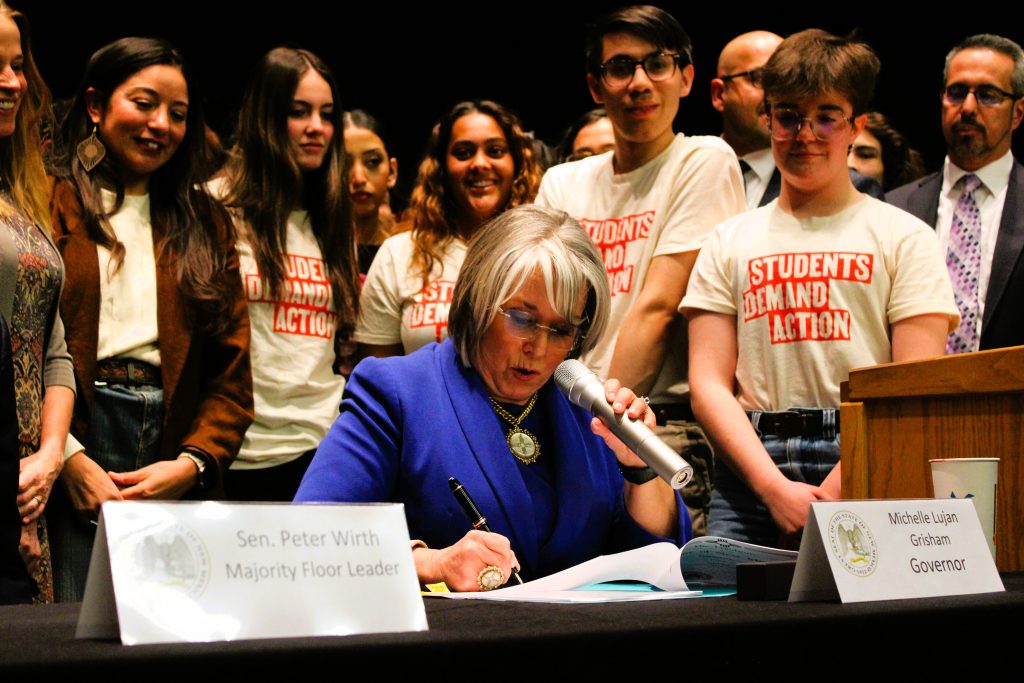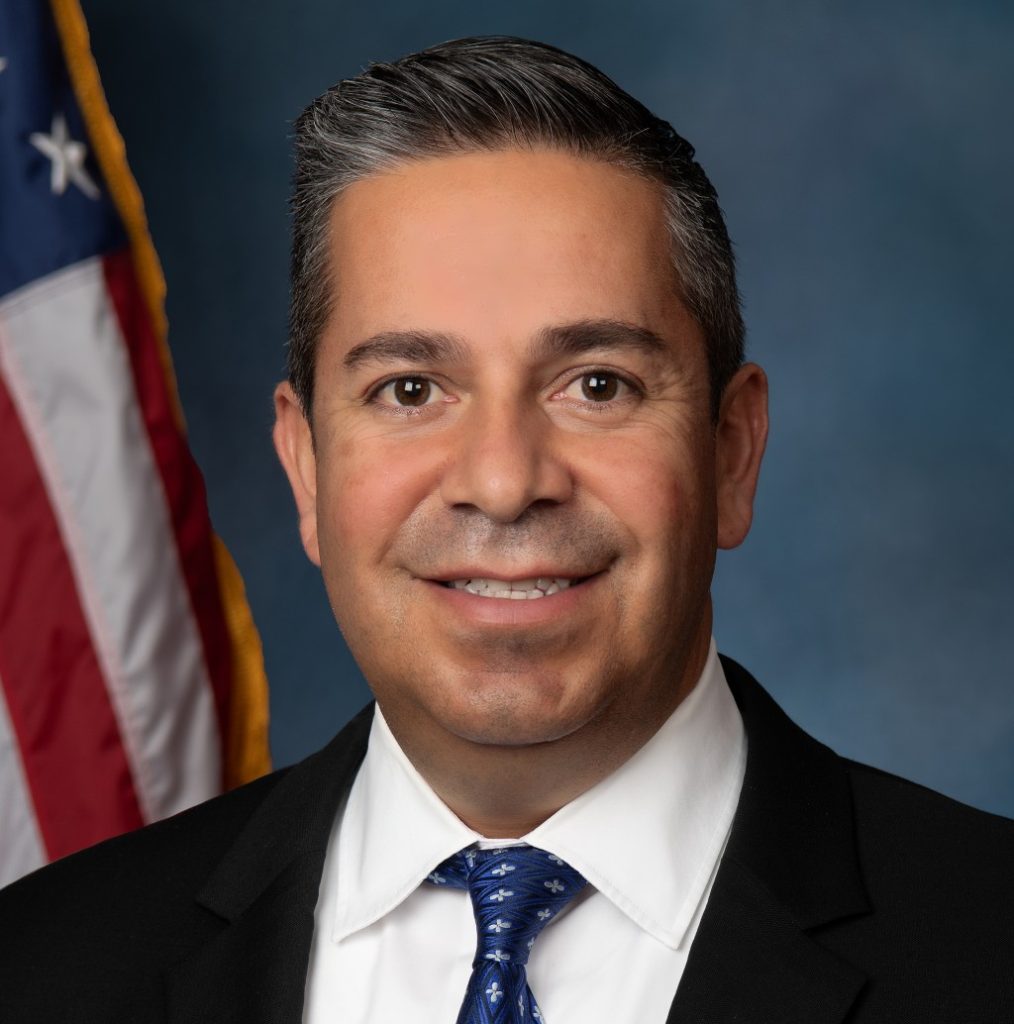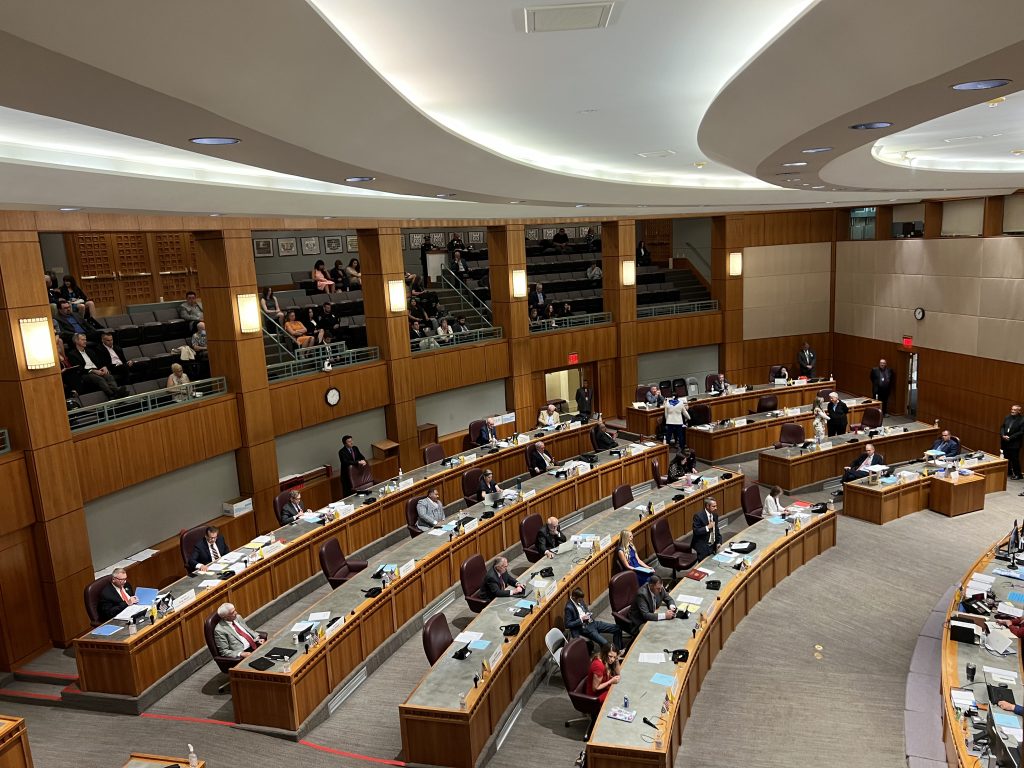New Mexico’s regulators have crafted ambitious new rules to limit air pollution from oil and gas wells, but some stakeholders worry that the flexibility they offer to operators will gut them.
“The problem is, right now, the exemptions swallow the rule,” said Jon Goldstein with the Environmental Defense Fund.
New Mexico ranks second in the nation for crude oil production.
This story originally appeared at Capital & Main and is republished with permission.
Thousands of wells tap the state’s reserves. The southeastern oil field, the Permian Basin, ranks among the busiest and potentially biggest oil reserves in the world.
Those thousands of oil and gas wells, along with storage facilities and transmission equipment, all leak, deliberately vent or flare some of the natural gas that emerges during the oil drilling process. In the first 20 years after its release, methane—which is the primary component of natural gas—is at least 80 times more potent as a greenhouse gas than carbon dioxide. The emissions not only contribute to climate change, they increase ozone, a lung irritant, and are released alongside other volatile organic compounds that can cause cancer.
After taking office in 2019, Gov. Michelle Lujan Grisham, a Democrat, tasked two state agencies with drafting two new rules to regulate emissions from the industry. When those drafts emerged this summer for an early-stage comment period, some environmental groups decried loopholes they say render the rules irrelevant for 95 percent of the state’s wells—leaving 115,000 New Mexicans living within a mile of a well that will see no change in its regulatory requirements.
State controls on methane have become increasingly important, as federal agencies have backed away from regulating the greenhouse gas.
“New Mexico’s a state that, for better or for worse, has a history of relying on federal agencies when it comes to a lot of oil and gas regulation, particularly when it comes to air quality,” Goldstein said. “And what the Trump administration has done is basically remove that federal backstop.”
And according to an analysis from the Environmental Defense Fund, the draft rule’s loopholes could exempt 87 percent of wells in the Permian Basin and 94 percent in the San Juan Basin.
*
That federal rollback has prompted some oil-producing states to dive into the fray and try to limit methane emissions. But, like New Mexico, those other states will face rising demands on staff, incompatible laws and threats of resistance from industry.
New Mexico’s methane emissions stand out in that national landscape. The magnitude of methane leaks from southeastern New Mexico’s Permian Basin is approximately 60 percent higher than the national average leakage rate, according to research published in April by Science Advances. And in 2014, NASA identified a huge methane hot spot—the size of Delaware—over the San Juan Basin in northwestern New Mexico.
But the industry cautions against a one-size-fits-all approach.
New Mexico’s two major oil and gas producing basins see “profoundly different production characteristics,” according to the New Mexico Oil and Gas Association’s “Methane Mitigation Roadmap.”
The trade group also encouraged state officials to exempt wells that produce less than 15 barrels of oil per day and said the state must consider existing federal regulations that already limit emissions of things like volatile organic compounds from the oil field.
The association also said it’s not financially viable to install leak detection equipment on old wells or tighten up pollution controls on wells that aren’t profitable.
That’s a complaint the New Mexico Environment Department (NMED) is required by law to consider, and the draft rules offer two exemptions: one for low-producing or “stripper” wells and one for wells that have the potential to emit less than 15 tons a year of volatile organic compounds.
Jason Sandel, who works with Aztec Petroleum and served on the state’s Methane Advisory Panel, said the exemptions are a concession to northwestern New Mexico communities hit hard by the downturn in natural gas prices.
The rules are designed to capture as much methane as possible from “large emitters and superemitters,” Sandel said, without penalizing communities that are already suffering.
The rule will apply to thousands of pieces of equipment and thousands of sources, said Elizabeth Bisbey-Kuehn, chief of NMED’s Air Quality Bureau. “When you have very small emitting sources, you have a very small amount of pollution you can control,” she said, adding: “We cannot require regulations with controls that are so costly that it would put someone out of business.”
New Mexico’s proposed rules mirror those in Pennsylvania and Colorado in targeting areas with high ozone levels, but they’re unique in exempting sites with low production or low projected emissions.
*
Thanks to an existing state law, NMED also faces the reality that its rules can’t actually regulate methane. Under the state’s Air Quality Control Act, agencies can’t target methane because it’s not a federally regulated pollutant.
Instead, NMED’s rule targets nitrogen oxides and volatile organic compounds, two ozone precursors, from oil and gas wells. Curtailing those emissions will have a “co-benefit” of reducing methane emissions, said Bisbey-Kuehn.
That also means the rules can only apply in the five New Mexico counties that currently experience unhealthy ozone levels.
“They have to be within our statutory authority if we’re going to get them through the rulemaking process and what are likely to be appeals by the industry,” explained Lara Katz, an attorney with NMED. Casting these rules as “methane rules” opens them to legal challenge from the oil and gas industry, despite industry collaboration in this process.
“It’s always cooperative until it gets to the final hearing. Then it really gets to be contentious,” Katz says. “From what we’re hearing … there’s going to be a lot of pushback.”
Meanwhile, the second state agency tasked with a rule-making, the Oil Conservation Division, can take a more direct run at the matter. Its draft rule requires operators to capture 98 percent of gas emissions from their wells and, unique to New Mexico, up the line to midstream facilities by 2026.
**Under the new rule, operators will need to retrofit existing wells. And when they apply to drill new wells, they’ll be asked to file a “gas capture plan” showing how they’ll avoid stranded gas, a source for leaks and long-lived flares.
“You have to get to 98 percent gas capture, but I’m not telling you exactly how you need to meet that, whether it’s a pipeline or beneficial use,” said Adrienne Sandoval, director of the Oil Conservation Division.
The percentage captured requirement represents a statewide average, intending to offer a little flexibility, Sandoval said, for wells that face challenges with compliance.
But that flexibility could leave room for operators to let some flares burn for the life of the well or allow some wells to continue venting methane — which is “climate death,” said Tom Singer of the Western Environmental Law Center.
A stiffer rule would ban routine flaring, Singer said, require firm agreements for gas capture and sale or use, or require wells to be shut-in when gas couldn’t get to market, a practice the industry adopted this spring when prices and demand hit record lows.
He said New Mexico regulators have “got guts,” particularly in adding components that work upstream from well heads, and present a model that future federal administrators could learn from.
But he said the state will need to adopt a verification program instead of relying on companies to self-report. And the state legislature will need to fund the agency to actually enforce the rule.
Both departments saw their budgets and staff cut under the previous governor, Republican Susana Martinez. Given a state budget deficit estimated at more than $900 million for fiscal year 2022, it’s unlikely those funding gaps will soon be filled.
Singer praised OCD, but said if the rule is “riddled with exemptions, it’s not going to be too tough.”
“The Environment Department is acutely aware of resource constraints and resource limitations to enforce not only existing facilities but any new regulations, so we are working on building out our compliance and enforcement program to ensure we have additional staff to enforce these regulations,” said Bisbey-Kuehn. “We have four inspectors to cover the entire state of New Mexico, which is a woefully inadequate number to conduct the kind of compliance work that we need.”
Capital & Main is an award-winning publication that reports on economic, political, and social issues.

